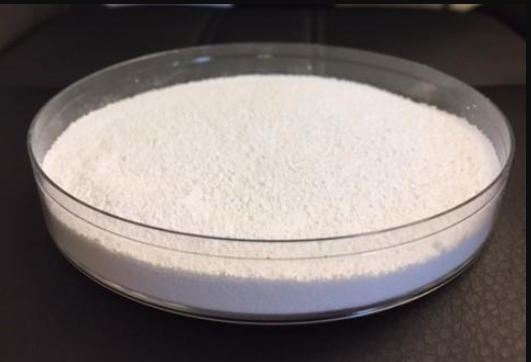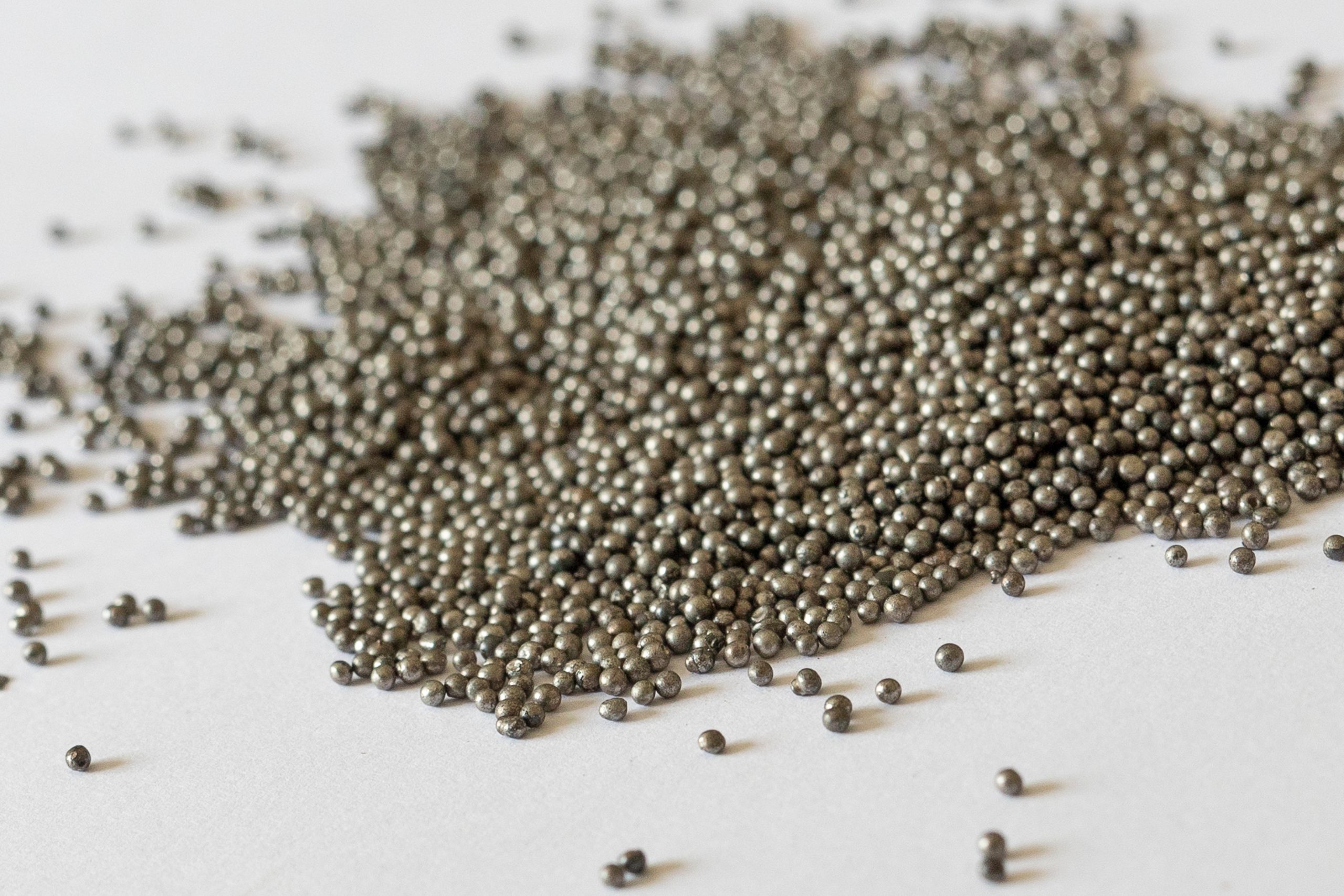
Brief Yourself Before You Blast!
It is important to know the differences in blasting media as you prep for your coating and painting project, since different abrasive blasting media are required for different applications. While media blasting is fast, safe and efficient, a blasting procedure with a particular abrasive “cannot be undone”, so choosing the right material is paramount. At Buffalo Manufacturing, we’ll provide concise advice on which blasting material is right for your application based on the cleaning work required.
Complimentary Safety and Technical Data sheets are provided for many of the media types we stock.
This complete Blasting Media Guide contains a list of the common blasting media and the differences in blasting media.
Jump to a section:
Aluminum Oxide | Plastics | Glass Bead | Steel Shot & Steel Grit | Ceramic Shot & Ceramic Grit | Cut Wire Shot | Baking Soda
ALUMINUM OXIDE
Aluminum Oxide is the most widely used abrasive blasting media. Its versatility and strength against a variety of materials – from metal, to glass, to wood – make it a favorite “go-to” for manufacturers and industry professionals doing surface prep.
Aluminum Oxide possesses many positives – it’s an extremely sharp, consistent and long-lasting abrasive that can be cost-effectively recycled.
Aluminum Oxide is ideal for:
- Abrasive Blasting – surface preparation & paint stripping
- Deep Etching to ensure a coating’s adhesion & performance
- Lapping
- Non-Skid
- Refractory Coating
- Decorative
Be Cautious: Due to it’s sharp consistency, aluminum oxide can be harder on equipment from sandblast nozzles to blast rooms. Equipment upgrades or strategies to protect equipment from long-term damage may be necessary.
PLASTIC
Plastic blast media is made of crushed urea, polyester, or acrylic. It ranges in hardness and particle size but can be relatively soft and less aggressive than Aluminum Oxide. It’s also a safe alternative to chemical stripping procedures.
Plastic Blast Media is ideal for:
- Stripping coatings and paint from delicate surfaces
- Surface level treatments (won’t hurt substrate/material underneath)
- Blasting Plastic Parts
- Mold Cleaning
Plastic blast media is high durability, free of Silica, and leaves no residual deposits.
Be Cautious: Plastic abrasives won’t work well on hard metals or for finishing applications. They may work more slowly on softer materials.
Data sheets for our full suite of plastic blast media below:
-
Download Urea Technical Data Sheet
-
Download Urea Safety Data Sheet
-
Download Melamine Technical Data Sheet
-
Download Melamine Safety Data Sheet
-
Download CLEAR-CUT® Technical Data Sheet
-
Download CLEAR-CUT® Safety Data Sheet
-
Download Acrylic Clear Technical Data Sheet
-
Download Acrylic Clear Safety Data Sheet
-
Download Polyester Technical Data Sheet
-
Download Polyester Safety Data Sheet
GLASS BEAD
Glass is not as aggressive a blasting media as materials like aluminum oxide. It is, however, well suited for stainless steel, delicate, or “thin-walled” applications. Its spherical shape produces a smoother, uniform and “sophisticated” finish.
A versatile material, glass beads can be used in both a suction or pressure blast cabinet. Glass beads can also be recycled multiple times.
Ideal applications include:
- Deburring
- Removing rust, paint and scale
- Cosmetic finishing
- Removing calcium deposits
- Polishing materials like cast iron, stainless steel and aluminum
- Preparing metal surfaces for painting and powder-coating
Be Cautious: As mentioned early, glass abrasives will work slower – or be ineffective – on harder materials. They will also not provide any etch to the material’s surface.
STEEL SHOT & STEAL GRIT
Both steel shot and steel grit can be used for a variety of applications to meet a variety of goals. If you hear someone using the terms “shot” and “grit” interchangeably, be sharp – they are two very different products.
Steel Shot Characteristics:
- A hard Abrasive
- Always designed in a spherical shape
- Smooth, Polished Surface
- Cost effective, durable, and recyclable
- Commonly used for shot peening – applications include manufacturing gear parts, springs and turbine blades
- Additional applications:
- Rubber build-up removal
- Epoxy and adhesive removal
- The larger the number of the shot, the larger the steel shot is. Larger shot will remove thicker coatings, and result in heavier peening
Steel Grit Characteristics:
- Angular, random shape
- Will etch or erode a surface – fast stripping action
- Ideal for removal of contaminants from a products surface, and creating a blast profile for new coatings to adhere to
- Removing mill scale
- Removing coating or coatings from a products surface
- Typical sizes commonly used range from G25 to G80
- The larger the size number for steel grit, the smaller the particle is
- Has the potential to be effectively used multiple times before replacement is warranted
Be Cautious: Since steel shot and steel grit are not as hard as Aluminum Oxide, they may not be as fast at removing surface contaminants. Additionally, if blasting stainless steel, the iron of the steel grit may cause corrosion of the substrate’s surface.
CERAMIC SHOT & CERAMIC GRIT
Much like their “steel” counterparts, ceramic shot and ceramic grit are two distinct blasting materials. A unique characteristic about ceramic blasting products is that they’re highly elastic, insuring high impact energy during blasting procedures. They’re also more durable than blasting materials like glass.
Ceramic products have no iron content, making them ideal in applications where ferrous contamination is a concern.
Ceramic Shot Characteristics:
- Spherical shape (also called ceramic “beads”)
- Contains a high percentage of zirconia (may be called “zirc shot” or “zirc beads”)
- Available in coarse, fine and very fine sizes
- Typically used for cleaning applications and often shot peening processes.
- Mold cleaning
- Micro Surface profiling of workpiece
- Contaminant removal
- Blasting of titanium or stainless steel
Ceramic Grit Characteristics:
- Angular, random in shape
- Used in applications to etch a workpiece surface or remove a tough contaminant:
- Cosmetic finishing
- Micro Surface profiling of workpiece
- Precision deburring
- Blasting of titanium or stainless steel
CUT WIRE SHOT
Cut Wire Shot is commonly utilized in peening, cleaning, tumbling, and vibratory finishing procedures, and is widely used in wheel blast equipment. “Cut wire” is made by cutting a piece of wire of a specific diameter into lengths, with the dimension equal to the diameter.
Available in, and categorized by, alloys such as stainless steel, carbon steel, aluminum, copper, zinc and nickel, cut wire shot pellets possess a good service life at high blasting velocity. They can be used over multiple blasting cycles.
BAKING SODA (SODIUM BICARBONATE)
“Soda blasting” is a relatively new technology in the field of abrasive blasting. Specially granulated sodium bicarbonate (or baking soda) is applied at high pressure upon a surface, to effectively smooth the surface and remove contaminants like oil or grease.
A key difference in abrasive blasting with sodium bicarbonate versus abrasive blasting with any other media is that baking soda’s attributes allow it to remove contaminants without damaging the underlying substrate. Because sodium bicarbonate shatters on impact, it is much gentler than blasting with a harder media like aluminum oxide or steel.
When utilized correctly, baking soda can be used to treat:
- Plastics
- Wood
- Chrome
- Mold
- Smoke/Fire
Soda blasting is environmentally friendly, non-toxic and biodegradable.
Be Cautious: Can you use the baking soda sold at grocery stores for a media blasting treatment? Emphatically “no.” The profile formula for sodium bicarbonate when as a blasting media is uniquely formulated for more aggressive removal application.
Because sodium bicarbonate can only be blasted once without the possibility of reuse, the running costs associated with soda blasting may be higher than the costs of blasting with other media.
On the plus side, set up is typically easier in comparison to blasting with harder media.
Be aware that soda blasting may leave a white film on the surface being cleaned, as well.

CONCLUSION
Surface treatment projects across industries have unique needs, and the blasting media that you use on them can make a big difference. Be attentive to practical use and application, as well as the pros and cons of each media to determine which one will work best with your material and your equipment set-up and operations.
Have questions? Contact Buffalo Manufacturing! Our expertise in abrasive blasting is just one reason why we’re “building tomorrow’s products today!”

